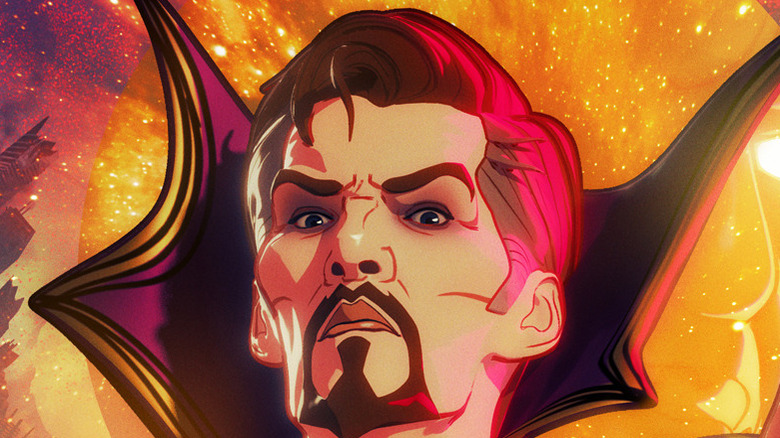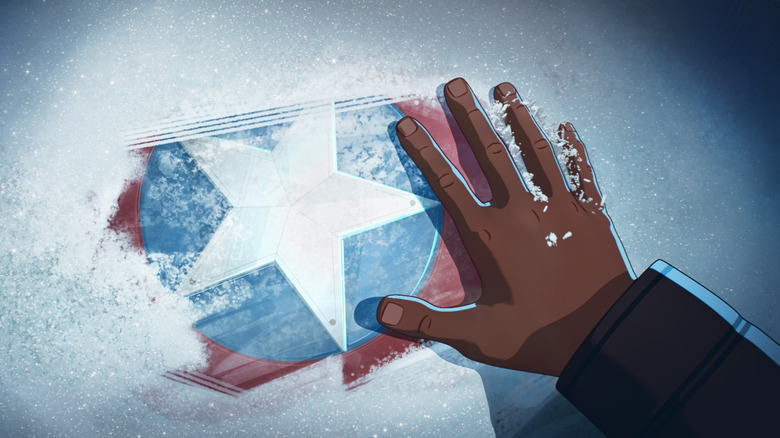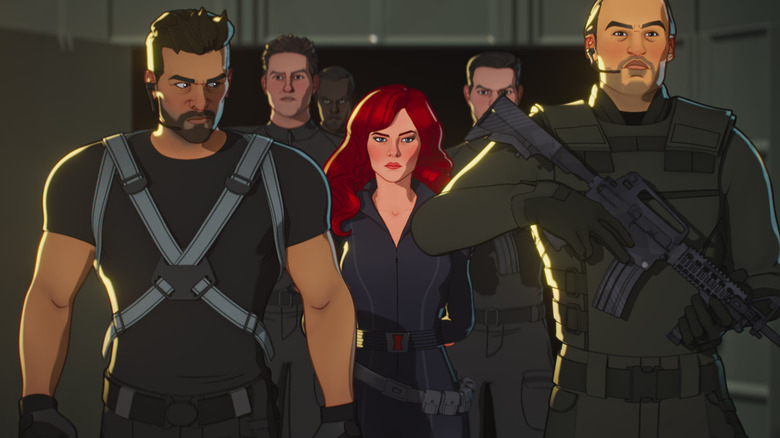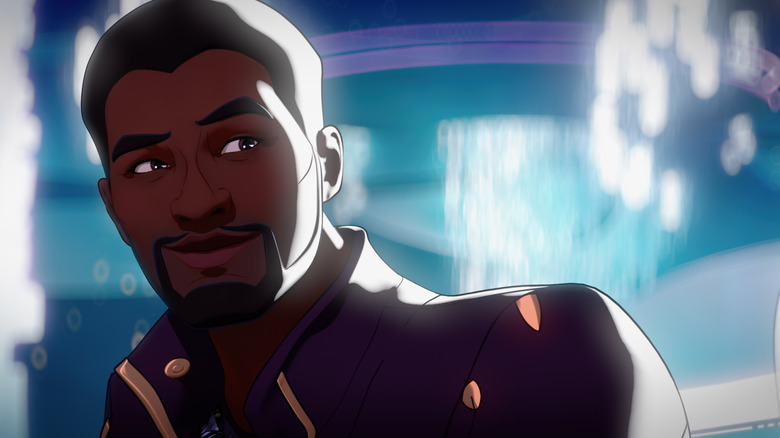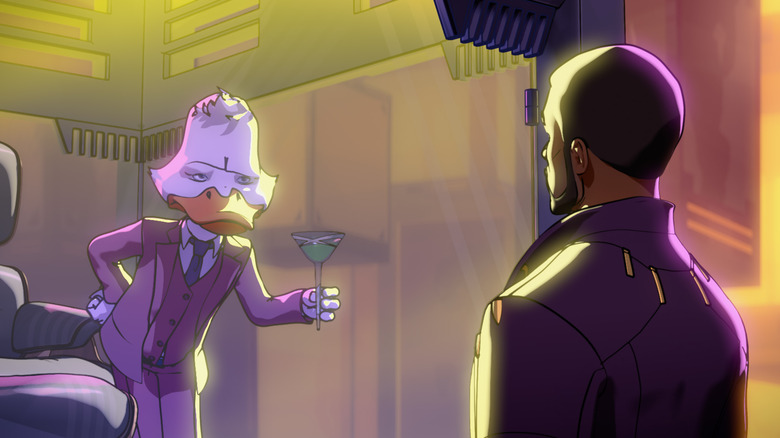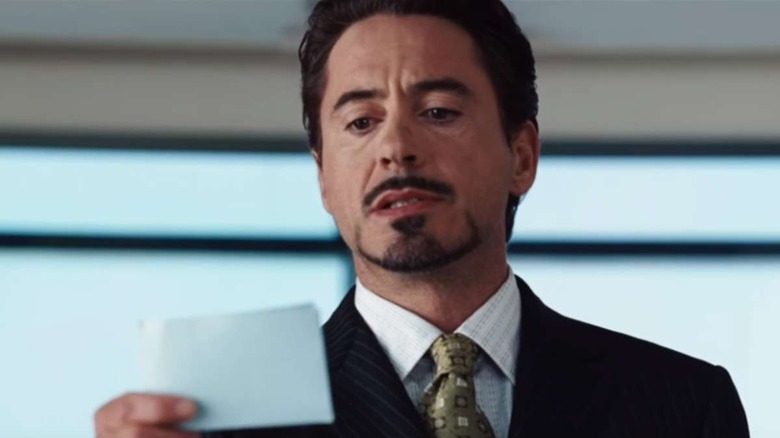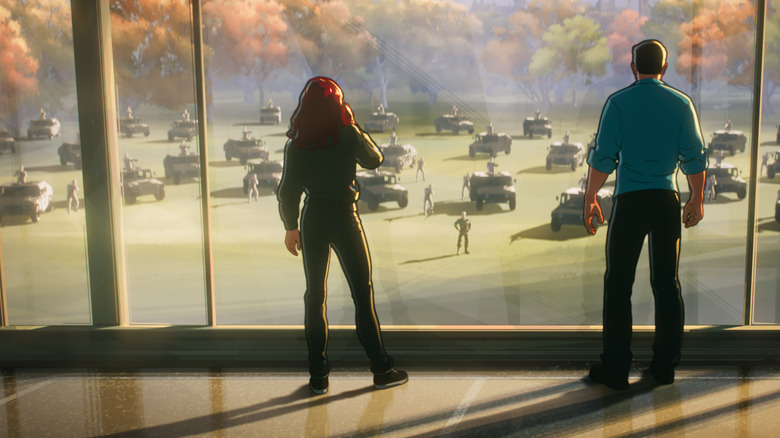Head Of Visual Development Ryan Meinerding Dishes On The MCU's Path To What If...? - Exclusive Interview
The Marvel Cinematic Universe has come a long way since "Iron Man" premiered in 2008. And through it all, head of visual development and character design Ryan Meinerding has been behind the scenes hammering out minute details and character design long before these projects are even a blip on fans' radars. The amount of work and preplanning that goes into the latest MCU blockbuster — and even the MCU shows on Disney+ — is unparalleled.
The MCU has carved out quite a few "firsts" in revolutionizing comic book content for the big (and small) screens. But what Marvel Studios does behind the scenes is equally as groundbreaking as smashing box office numbers — and when it comes to the people who've helped bring this vision to life, Meinerding is one of a very few who've had their hands on every project.
Looper spoke to Ryan Meinerding for an exclusive interview during which he dished on the evolution of the MCU from "Iron Man" to "What If...?," what his collaboration with other creatives and directors looks like, and even the first sketches he did for the show quite a few years ago.
Bringing superheroes to life
For anyone who might not know, what do you do as head of visual development, and why does this process make Marvel so unique?
I lead a team of concept artists that essentially are responsible for designing the heroes and villains of the MCU. So we're unique in that, in a lot of the other movie studios, a person like me would work for someone else, like a costume designer or for a production designer. But we are actually an in-house part of Marvel Studios that has stayed with the characters since the beginning, so I've worked here since "Iron Man."
And the notion that we are our own department, we do drawings and paintings, listening to what the filmmakers want to accomplish and essentially present those and say, "Hey, here's 15 versions of Iron Man, which one's going to work for your movie?" And they can say, "Well, we like these two, but we don't like the rest of them. Can you do more variations?" Then we do more and more variations until the filmmakers are happy with what's being presented, and then we sort of help ... That art becomes the stuff that goes down the different pipelines, either to visual effects or the costume department, and we work with those different departments to help execute and then make sure that those characters are as well represented as possible.
The cohesiveness of the MCU
How do you think this setup has helped the overall trajectory and cohesiveness of the MCU?
I mean, I'd like to believe that there is a strong cohesiveness because there are a lot of the same artists that are generating the different looks for the characters. I also want to believe that the investment that each one of the artists has in a specific character means that they're going to work harder to make sure that something works. That it's visually as amazing as it possibly can be — that it's as representative of the icon and is representative of the story that the filmmakers are trying to tell.
So I'd like to believe that we're doing our best to focus on how incredible the characters are and to make each one of them feel as unique as possible within the context of all of the other characters. And that we're helping to really give the filmmakers the best looks possible that they can put into their films and use for storytelling.
Finding the animation
What are some of the earliest pieces of concept art that you did for "What If...?," and how far in advance did you start working on this project?
Wow. I feel like my brain has not quite computed the pandemic time period, so it's challenging to actually remember exactly, but it might've actually been back to late 2018 when we started. And we were working on ... I had a list of probably about seven characters that Brad Winderbaum mentioned to me that they were excited about, including Peggy and Steve and the Hydra Stomper, and Star-Lord T'Challa, and Zombie Cap, and Doctor Strange.
So I think that was kind of sort of the first set of characters that we were working with and specifically with Peggy and Steve and the Hydra Stomper. It was where we were trying to find the style of the show as well.
Animation is challenging in a lot of ways, but the notion of designing characters while you're trying to figure out a style makes it even slightly more challenging because the look of the show is going to be dependent on really nailing those characters. That was kind of the starting point. Lots of variations, lots of explorations about how stylized versus how realistic, how cartoony should it be versus landing on that sort of more illustrative Leyendecker style.
All hands on deck
What does the collaboration look like between you and some of the other behind-the-scenes folks, like director Bryan Andrews?
I mean, essentially, Brian brought the notion of using J.C. Leyendecker to the table, and I would have long ... Because I'm a huge fan of J.C. Leyendecker as well. He and Norman Rockwell are some of my main sources of inspiration outside of comics. But the notion of just meeting up with him and discussing and looking through images of Leyendecker from the past and old Saturday Evening Post covers and different ads that he would have done and trying to figure out what the hallmarks of that style are.
Leyendecker's stuff was also very complicated. He's one of the best visual artists and designers, I think, that's ever lived. So the way that he would stylize the design shapes and the different brushstrokes and things that he would use to actually paint his covers and ads are very complicated. It's not a simple style.
So there was a lot of conversation about how do we simplify this? How do we turn this into something that we can animate? But that was sort of early on. Once we got into actually, not necessarily nailing that stuff, but then getting into characters, specifically when I'm drawing or when some of the team were drawing, the notion of, on a very simple basis, if we're doing an evil version of Doctor Strange, it means that I'm going to do 20 or 30 versions of Doctor Strange that's gone evil, and he's going to give notes and say what he thinks.
"This works, we want to do..." There are going to be additional components of him absorbing and creatures into himself. Do we make that part of it? How sick should it be? How powerful should he look? All those conversations sort of come out and end up really driving the look of the character until it gets to a final that Brian and Brad and the rest of Marvel Studios signs off on.
Bringing childhood dreams to life
You're in the unique position of having been involved with creating the MCU from the very beginning. How has that helped you in a show like "What If...?," where you're tackling so many different variations of the characters that we've been following since "Iron Man"?
You know, I'd like to think it's very helpful because I have an understanding of where the characters have been and if we're going to tweak them or go a different direction with them, to understand the backstory as thoroughly as possible. So I'd like to think it's helpful that I've been here for so long.
It also is helpful in a shorthand with communicating with producers and things about stuff because they have a similar type of understanding of where the characters have been and what it means if they go down a different road. But I think, in all honesty, what it also brings from my point of view, is just a love of the characters and a love of the MCU, right? Some of the characters I've worked on are the characters I've loved since I was very small, and the notion of being able to bring that passion and care and love for those characters into a new format, I think, is a lot of what I hopefully brought to the table as well.
The evolution of the MCU
How has this process developed and changed since the early days of the first few movies up until your work now with "What If...?"
You know, honestly, the fun of those early days on "Iron Man," It was interesting because Marvel Studios was not a studio that existed before "Iron Man," right? So there was a lot of excitement and a lot of energy around a startup movie studio and the notion that we're seeing the beginning of something that could be special. And in all honesty, it was the first big movie I had ever worked on as well.
So I had a lot of love and affection for the people that I was going through in the trenches to help make that movie. I think the fun of "What If...?" is that it's a similar sort of thing, right? We're venturing. It's the first Marvel Studios animated project, so we're venturing into new realms. We're starting up something new from scratch and being around other super talented people that are all inspiring and working as hard as we can to make something as good as it could be.
It all feels very similar out there. I think that's one of the amazing things that Kevin [Feige] has been able to do at Marvel Studios as a whole, is everything builds to something else that everyone can feel like they're a part of at the studio.
And I think it's one of the testaments to why this place is successful, and it's also a testament to why people stay around here so much. I was working on the first "Iron Man" with Brad Winderbaum, who is executive producing this show, and also worked on the first. And then so did Bryan Andrews, in a roundabout sort of way. So it's the idea of being able to work with such talented people over such a long stretch of time is really, really cool.
New episodes of "What If...?" air Wednesdays on Disney+.
